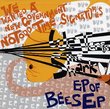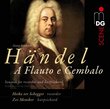| All Artists: J.S. Bach Title: Bach in Koethen Members Wishing: 0 Total Copies: 0 Label: Phantom Sound & Vision Original Release Date: 1/1/2009 Re-Release Date: 11/17/2009 Album Type: Import Genre: Classical Style: Number of Discs: 1 SwapaCD Credits: 1 UPC: 4019272602108 |
Search - J.S. Bach :: Bach in Koethen
 | J.S. Bach Bach in Koethen Genre: Classical
Johann Sebastian Bach worked in the years 1717 1723 as director of music at the court of prince Leopold in Koethen, a little town in Saxony-Anhalt. It was the ideal case of ourt-musical employment: Bach met a highly quali... more » |
CD Details
Synopsis
Album Description
Johann Sebastian Bach worked in the years 1717 1723 as director of music at the court of prince Leopold in Koethen, a little town in Saxony-Anhalt. It was the ideal case of ourt-musical employment: Bach met a highly qualified orchestra, excellent instruments and the service was free of clerical official duties. He created here immortal works of art, especially the Brandenburg Concertos, the first part of his Well-Tempered Piano, numerous solo suites, partitas and sonatas, as generally the biggest part of his piano- and chamber music oeuvre.

 Track Listings (20) - Disc #1
Track Listings (20) - Disc #1

